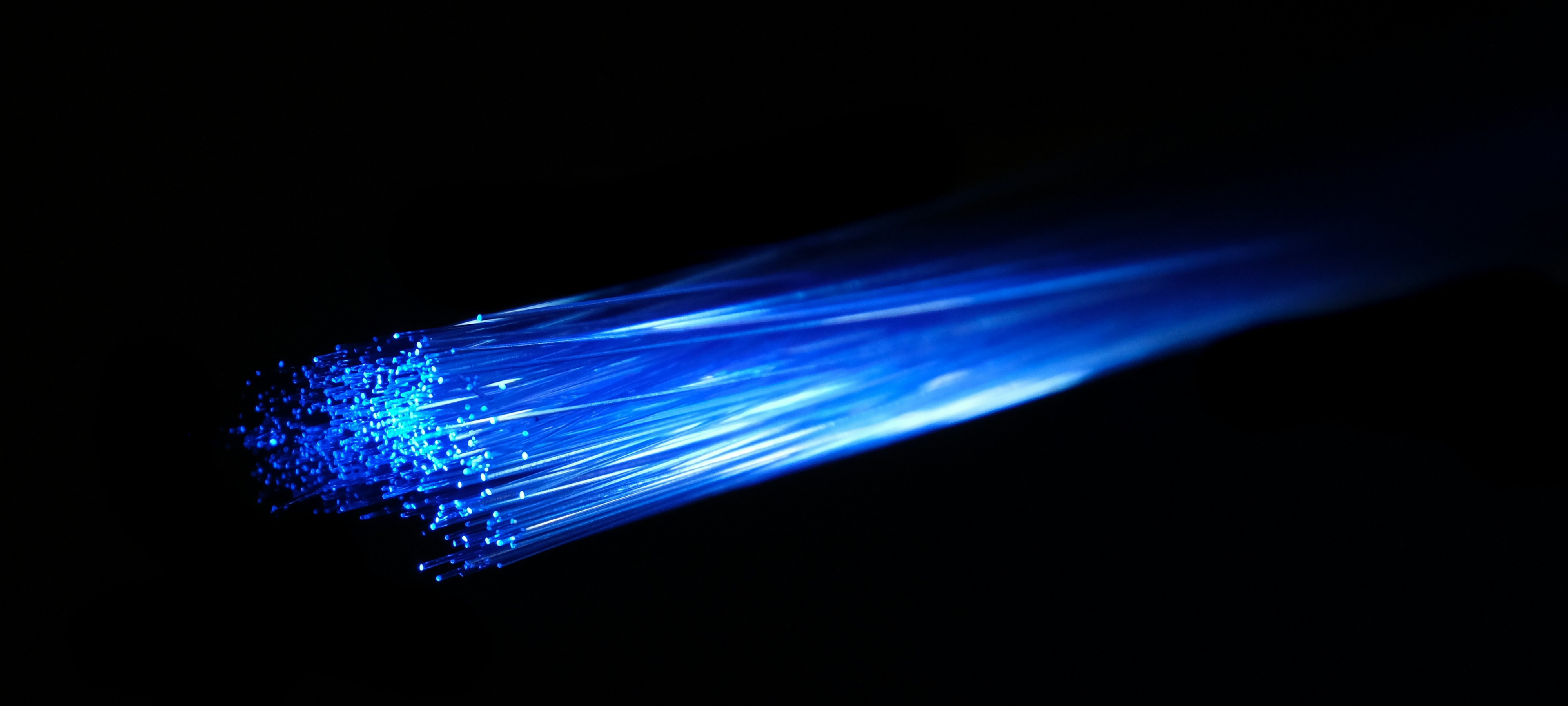The Government has recognised that the UK can’t afford to be left behind on broadband speed and availability, publishing its targets and policy for “Gigabit Broadband” last month.
This is the next step change in broadband speed and follows on from the rollout of “Superfast Broadband” which was the government target speed set in 2010 and is now available in 95% of UK premises. “Superfast Broadband” is commonly defined as a download speed of 30 megabits per second (Mbps).
“Gigabit Broadband” is defined as any technology that can deliver download speeds of at least 1 gigabit per second (Gbps). 1 Gbps is equal to 1000 Mbps. At 1 Gbps an entire HD film can be downloaded in under a minute.
To put it into context, here’s how fibre optic compares in terms of internet download speeds:
- Fibre optic: up to 10Gbps (at a data transfer rate of up to 10 billion bits per second)
- Copper cable: 25-300 Mbps (at a data transfer rate of up to 300 million bits per second)
- DSL: 0.5-75 Mbps
- Satellite: 5-25 Mbps
A full-fibre connection can also deliver very low latency – meaning there’s less delay in the time it takes from sending a request and receiving a response.
However, it is important to note that the broadband speed can still vary depending on a number of factors, including location and the type of fibre connection in the area, such as fibre to the cabinet (FTTC), fibre to the premises (FTTP), etc.
Full fibre broadband (Fibre-to-the-Premises or Home FTTP/FTTH) offers a full fibre optic cable connection from the local exchange to each premise. This is the most reliable broadband technology available.
What technologies can deliver Gigabit Broadband?

FTTP provides full fibre optic cable all the way from the nearest exchange point to the local roadside cabinet. It can achieve speeds from 40 Mbps to 1 Gbps, although it depends on several factors.
High-speed cable broadband (DOCSIS3.1) Cable broadband uses a combination of fibre optic cables and legacy co-axial cables (used for cable TV). It is more susceptible to local congestion compared to full fibre networks.
Future 5G networks should also be able to support gigabit speeds, but this will be a challenge in rural areas, given the need for 5G antennas to be very close together and for them to be connected back to a core internet network (“backhaul”) with lots of fibre optic cable.
How fast can fibre optic go?
Full fibre broadband is already available in some areas such as London at 10 Gbps for business users and will become more widespread over time.
In theory, high-speed cable broadband (D3.1) can reach downstream speeds of 10 Gbps and upstream speeds of 2 Gbps but only in ideal conditions and it’s doubtful it can be consistently achieved in a commercial rollout. The current fastest commercial trial in the UK so far is 2.2 Gbps downstream.
5G networks, in theory, can reach speeds of 10-50 Gbps but currently, the fastest UK download speeds are around 500 Mbps from Network operators in London, so there is a lot of work to do to even get to 1Gbps let alone 10Gbps.
However, full fibre broadband using fibre optic cable is set to go much faster. Prysmian Group, together with Nokia Bell Labs and the National Institute of Information and Communications Technology (NICT) managed to achieve a
world record data transmission speed of 1 Petrabit per second (equal to 1,000,000 Gigabits) over an optical fibre with standard dimensions.
This was achieved by combining highly spectral efficient wideband optical transmission with a fibre guiding 15 spatial modes, and the use of specific mode multiplexers. As a result, the transmission speed was 1.7 times faster (for multi-mode fibre) and 5.7 times faster (for single-mode fibre) than the previous record of 0.4 Pbps.
So even though it’s possible for data transmission to travel at breath-taking speeds, it may not be available for home broadband for a long while.
What factors affect fibre optic speed?
It is important to remember that several factors can affect fibre optic speeds.
Bandwidth: This refers to the capacity of an internet connection that is shared by all users in a particular area. High usage by neighbours streaming films, attending Zoom meetings, or playing video games can reduce the available bandwidth and slow down internet speed for others.
Network congestion: During peak usage hours, more people are competing for the data, which can cause problems with bandwidth usage, leading to high latency. This means it will take longer for a particular amount of data to travel from one server to another. For internet users, it will take longer for a website to load, make online purchases, or watch a video.
Quality of equipment: The type and even the age of devices used can also have an impact. For example, types of hardware, network interface card (NIC), operating systems, and web browsers can all affect fibre optic speeds.
Single-mode vs multi-mode fibre: It is important to consider the type of fibre installed. Single-mode fibre is smaller in diameter but offers higher performance over longer distances. This is because there are lower internal reflections, which results in faster signals and a lower chance of signal loss. Multi-mode fibre has a larger diameter and experiences more internal reflections. This means the signal is slower and can only travel short distances.
What are the limitations of fibre optic?
Fibre offers higher bandwidth, faster speeds, longer transmission distances, and immunity to interference, but it is more expensive, fragile, and requires specialised installation. When installing fibre, extra care must be taken so that it is not twisted or bent too tightly. Copper is easier and cheaper to install, which makes it more suitable for shorter distances and less demanding applications, however, it has lower bandwidth, higher attenuation, and is susceptible to interference.
Prysmian Fibre Optic Cable: Linking the future.
From
fibre optic and copper cables, to
connectivity components and accessories; we’re helping to link communities, continents and countries faster and more efficiently than ever before.
Our global presence, combined with our experts’ regional knowledge, means we’re uniquely placed to support the needs of every customer: from manufacturing high-performance and cost-effective data cables within tight lead times, to offering specialised network solutions which enable high-speed connectivity in the core network, within datacentres, or at the edge.





